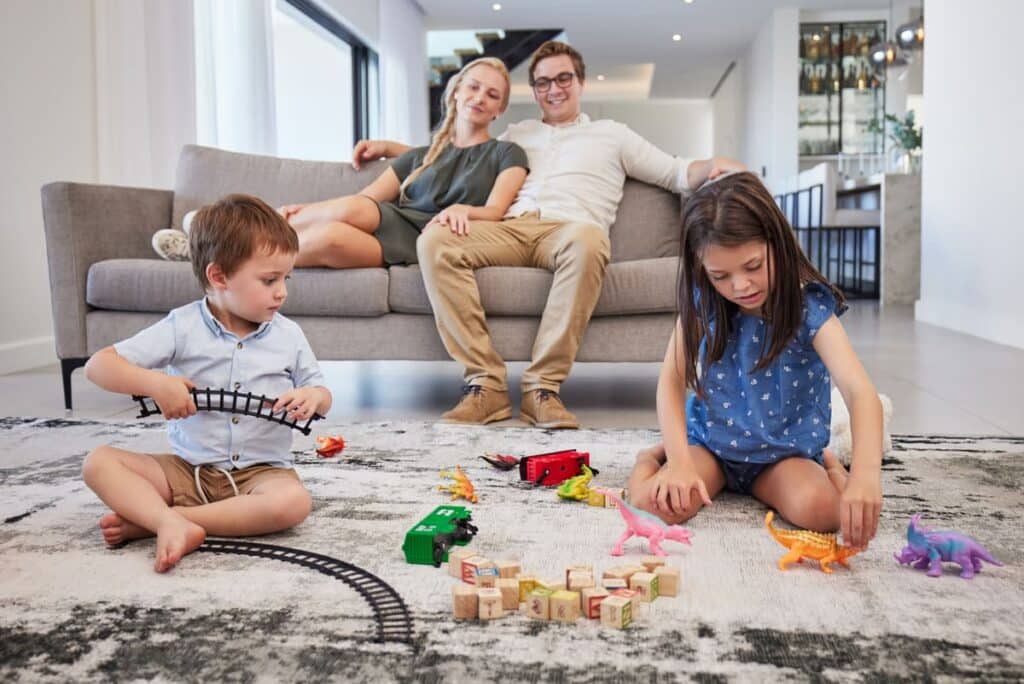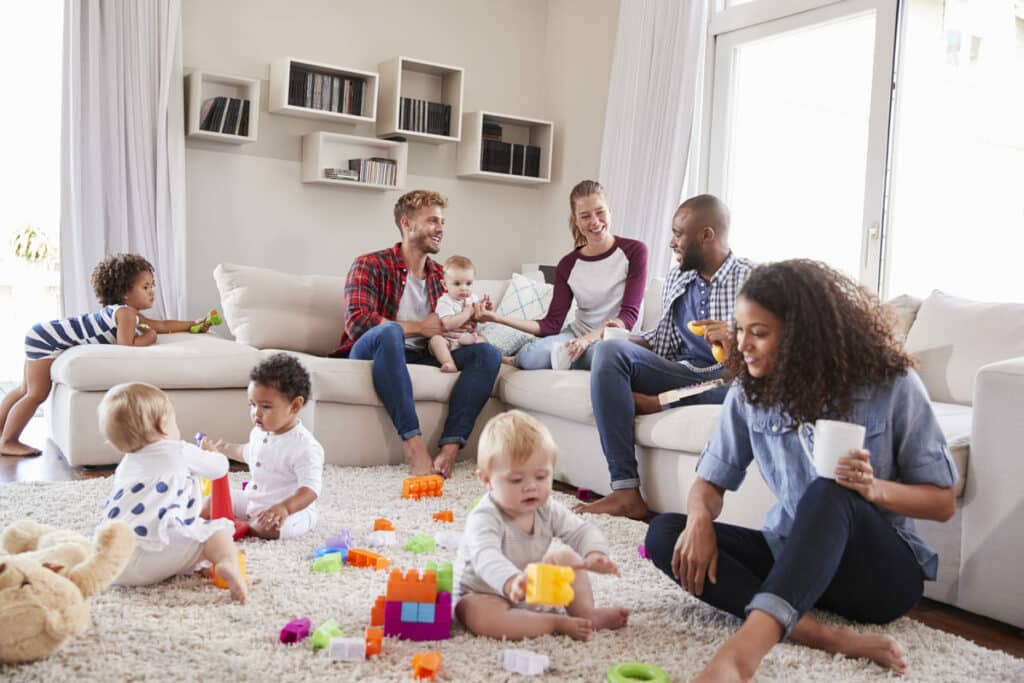Designing a home that is both stylish and functional for a family can be challenging but deeply rewarding. Family-friendly spaces should cater to the needs of children and adults alike, balancing safety, durability, and comfort with aesthetic appeal. Thoughtful design choices can help create a home where every member of the family feels welcome and inspired.
In This Article
1. Prioritize Safety and Practicality
Safety is a top priority in family-friendly spaces. Incorporate design elements that protect children while maintaining functionality, such as:
- Rounded furniture edges to prevent injuries.
- Non-slip flooring in high-traffic areas like kitchens and playrooms.
- Shatterproof glass partitions to maintain openness while ensuring safety and durability.
These choices create a secure environment without compromising on design.

2. Create Multi-Functional Areas
Family homes often need to serve multiple purposes. Design spaces that adapt to various activities, such as:
- A living room with modular furniture that can transition from playtime to movie night.
- A kitchen island with seating, storage, and space for homework or casual meals.
- Flexible dividers like glass partitions to create distinct zones for different activities while allowing light to flow freely between areas.
Multi-functional areas ensure the home is versatile enough for the dynamic needs of a family.
3. Choose Durable and Easy-to-Clean Materials
Busy families need materials that can withstand wear and tear while being easy to maintain. Consider:
- Washable paints for walls to handle fingerprints and smudges.
- Stain-resistant fabrics for sofas and chairs.
- Hardwood or vinyl flooring that is durable and easy to clean.
These materials keep spaces looking fresh and inviting despite the demands of daily life.
4. Incorporate Ample Storage Solutions
Keeping a family home organized can feel like a daunting task, but smart storage solutions make it easier:
- Built-in shelving and cabinetry in living rooms and bedrooms to minimize clutter.
- Storage benches or ottomans to combine functionality and style.
- Under-the-stairs storage to utilize every inch of available space.
Well-planned storage keeps toys, books, and essentials within reach while maintaining a tidy appearance.

Family-friendly design focuses on creating areas where everyone can come together. Key elements include:
- A large dining table for shared meals and activities.
- A cozy family room with comfortable seating for relaxation and bonding.
- Outdoor spaces like a patio or backyard equipped with kid-friendly furniture and play zones.
These shared spaces promote connection while catering to individual comfort.
6. Add Personalized Touches
Making a house feel like home means incorporating elements that reflect your family’s unique personality. Examples include:
- Family photo walls or artwork made by children.
- Color palettes and themes that align with everyone’s preferences.
- Dedicated areas for hobbies, such as a reading nook or craft corner.
Personalized touches make the home a reflection of the people living in it.
In Conclusion
Creating a family-friendly space doesn’t mean sacrificing style. By focusing on safety, adaptability, and thoughtful design elements like glass partitions, you can craft a home that meets the needs of every family member. With the right balance of functionality and aesthetics, your home will become a haven where memories are made and cherished.





![Home Renovation Guide [2025]](/app/uploads/2021/04/design-hacks-1-378x300.jpg)
